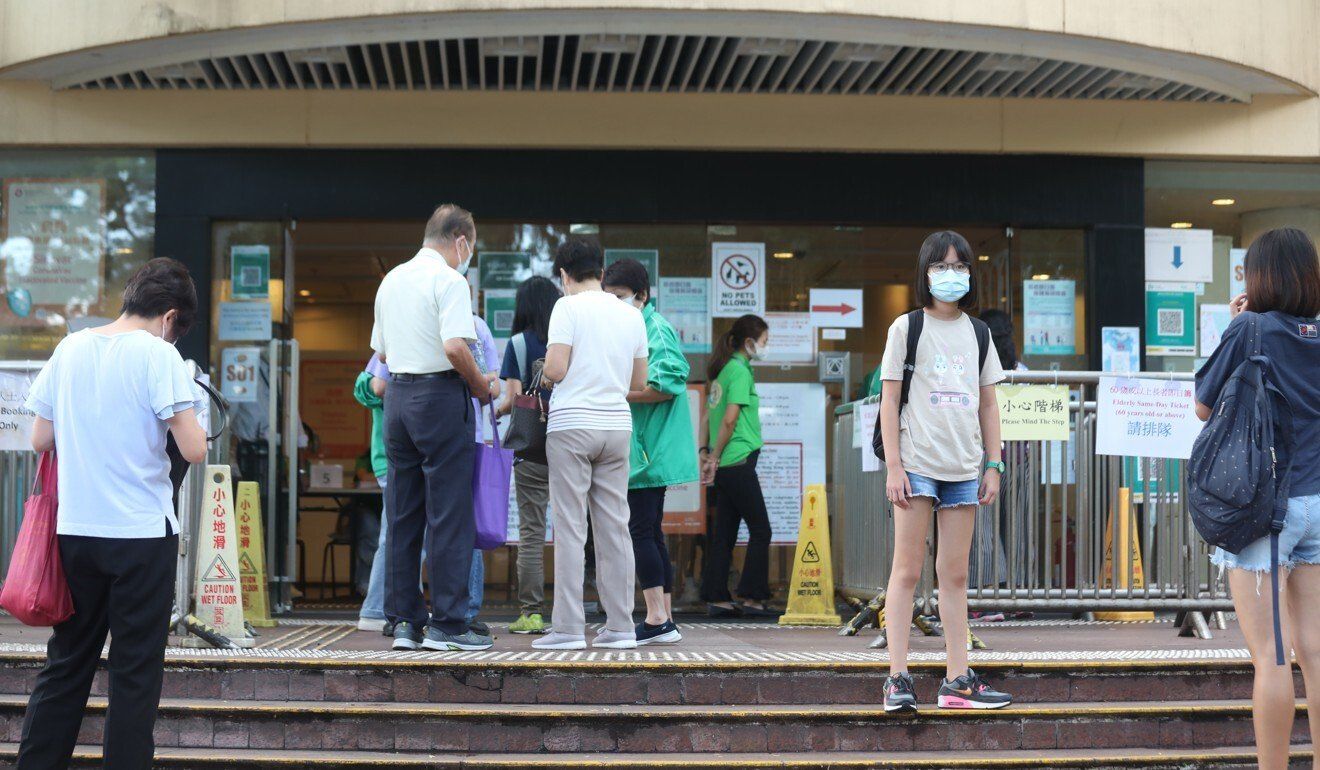Hong Kong News

Hong Kong study finds higher risk of facial paralysis with Sinovac jabs
A Hong Kong study has found an “increased risk” of a rare condition involving temporary facial paralysis following Covid-19 vaccinations with Chinese Sinovac jabs, but researchers urged more people to get inoculated in a city that has spent months limping towards herd immunity.
The University of Hong Kong team found that if 100,000 people had taken the Sinovac CoronaVac doses, there would be 4.8 more cases of Bell’s palsy within 42 days.
“Our study shows an overall increased risk of Bell’s palsy after CoronaVac vaccination, but not after BNT162b2 vaccination,” the academics wrote in the Lancet Infectious Diseases journal on Tuesday, referring to the German-made BioNTech shots.
 Residents queue up for vaccination at Central Library in Causeway Bay.
Residents queue up for vaccination at Central Library in Causeway Bay.
They found there would be two more cases of the facial condition in every 100,000 people who had received BioNTech doses.
But the team, led by Professor Ian Wong Chi-kei, head of the department of pharmacology and pharmacy, said more data was needed to conclude whether BioNTech jabs increased overall risks of Bell’s palsy.
“Nevertheless, Bell’s palsy is a rare and transient adverse event following immunisation,” they wrote. In general, more than 90 per cent of all cases could be resolved within nine months following prompt corticosteroid treatment.
“The beneficial and protective effects of the inactivated Covid-19 [Sinovac] vaccine far outweigh the risk of this generally self-limiting adverse event,” they wrote.
The team analysed 298 Bell’s palsy patients in the city between February and May 4, of which 85 per cent were unvaccinated. Only 28 patients had taken Sinovac doses and 14 had received BioNTech jabs.
The team compared the data with 1,181 public hospital patients who were not suffering from facial paralysis in the same period, where 93 per cent of them had not received shots, and 53 people had been vaccinated with Sinovac doses.
Hong Kong’s inoculation drive has picked up steam in recent months with more than 6.6 million doses administered. Of those, over 2.5 million were the Sinovac vaccine, and more than 4.1 million were the BioNTech one.











